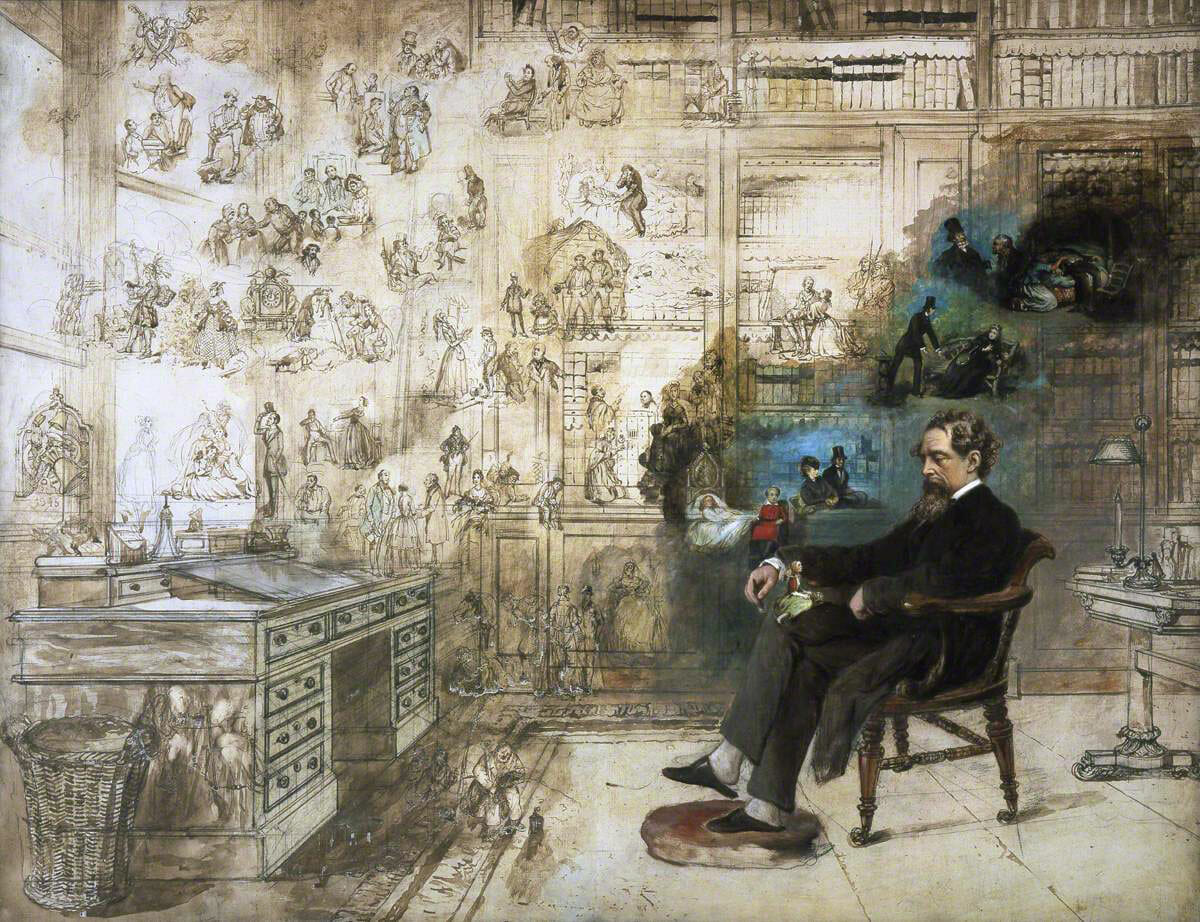
Flatland | A world limited to two dimensions
Author
Year
Format
Imagine a vast sheet of paper on which straight Lines, Triangles, Squares, Pentagons, Hexagons, and other figures, instead of remaining fixed in their places, move freely about, on or in the surface, but without the power of rising above or sinking below it, very much like shadows – only hard with luminous edges – and you will then have a pretty correct notion of my country and countrymen.
So it begins Flatland: a Romance of Many Dimensions, written by the English theologian and schoolmaster Edwin Abbott Abbott, born in 1838, a novella that is “part mathematical exploration, part satire and part fairy tale”. Published in 1884 and divided into two sections, it describes life in Flatland, an imaginary world limited to two dimensions and inhabited by geometric figures that can’t perceive depth.
The narrator is a Square who meets a Sphere and gains access to Spaceland, our three-dimensional universe. On his return to Flatland, he tries to explain what he saw to his fellow citizens but nobody believes his story. The Grand Council soon accuses the Square of heresy and condemns him to perpetual imprisonment. In jail he writes Flatland as a memoir, hoping to inspire posterity to see beyond the limit of two dimensions.
A rigid society based on shape
In the first part of the book, titled This World, the Square describes life in his bi-dimensional universe. Society in Flatland is organized into strict classes based on shape. Isosceles triangles are soldiers, equilateral triangles are tradesmen, squares are professionals, and circles form the highest cast consisting of priests. Simply put, the more sides an individual has, the higher his class. According to the so-called Law of Nature, each generation achieves one more side than its fathers. However, this law doesn’t apply to the lowest class.
While men are polygons with a variable number of sides, women are straight lines. Considering they are both potentially invisible and extremely sharp, they are regarded as dangerous creatures subjected to specific norms. When they enter a building, for example, they must use different doorways; as they walk, they are required to sing a peace-cry and keep moving their backs to indicate their presence.
Comparing it to moral depravity, Flatlanders do not accept irregularity. Irregular polygons are thus either “destroyed at birth” or subjected to “compression, extensions, trepanning, colligations, and other surgical or diaetetic operations by which irregularity is partly or wholly cured”.
Such a hierarchical, conservative and sexist society described by Abbott was intended to be a parody of Victorian Society, “with its ethos of social climbing, its fetish of conformity, and its refusal to acknowledge the sociological roots of “immoral” behavior”.
From two dimensions to endless possibilities
The second part of the book, titled Other Worlds, deals with the Square’s adventures in other universes. It begins with a bizarre dream: the Square ends up in a one-dimensional place called Lineland, where he tries in vain to convince its inhabitants of the existence of a second dimension.
Then the Sphere appears and starts describing a third dimension. Just like the inhabitants of Lineland, the Square himself struggles to accept this new dimension. Only after visiting Spaceland is he fully convinced about the existence of a tridimensional world. Fascinated by this discovery, he starts to wonder if a fourth, a fifth and even higher dimensions exist. But the Sphere abruptly dismisses his theories. And that’s when the Square realises:
How strong a family likeness runs through blind and persecuting humanity in all Dimensions! Points, Lines, Squares, Cubes, Extra-Cubes – we are all liable to the same errors, all alike the Slaves of our respective Dimensional prejudices.
With Flatland, Abbott challenges readers to consider the nature of perception and the boundaries of our knowledge. The book is an invitation to keep an open mind, explore new ideas and always accept new possibilities. Without this attitude, one remains ignorant, confined in a dull, flat existence.
Flatland’s popularity
Now considered a pioneering work of mathematical fiction, Flatland did not achieve popular success on its debut. It only gained a broad audience in the 1920s, after the publication of Albert Einstein’s General Theory of Relativity, which focused attention on the concept of a fourth dimension.
Over the years since then, many mathematicians and scientists, including Martin Gardner, Carl Sagan, Stephen Hawking, and Stephen Carlip, have mentioned Flatland. Abbott’s novel has also inspired a large number of animated short films, books and short stories. It features in the animated science fiction TV comedy series Futurama and in the American sitcom The Big Bang Theory, where scientist Sheldon Cooper uses his imagination to take a trip to Flatland, his favorite imaginary place to visit.
Tag
Buy a ☕ for Hypercritic









